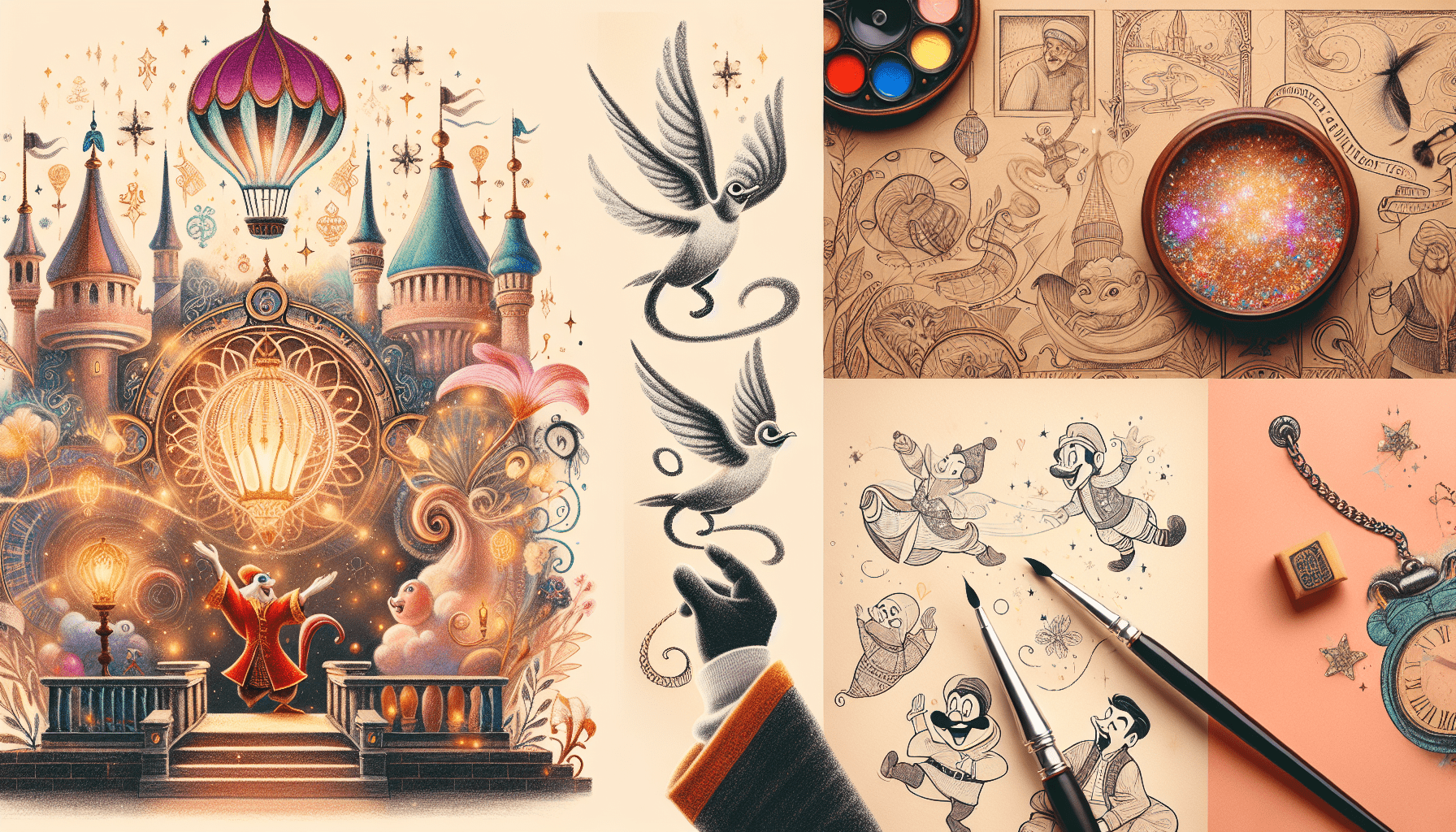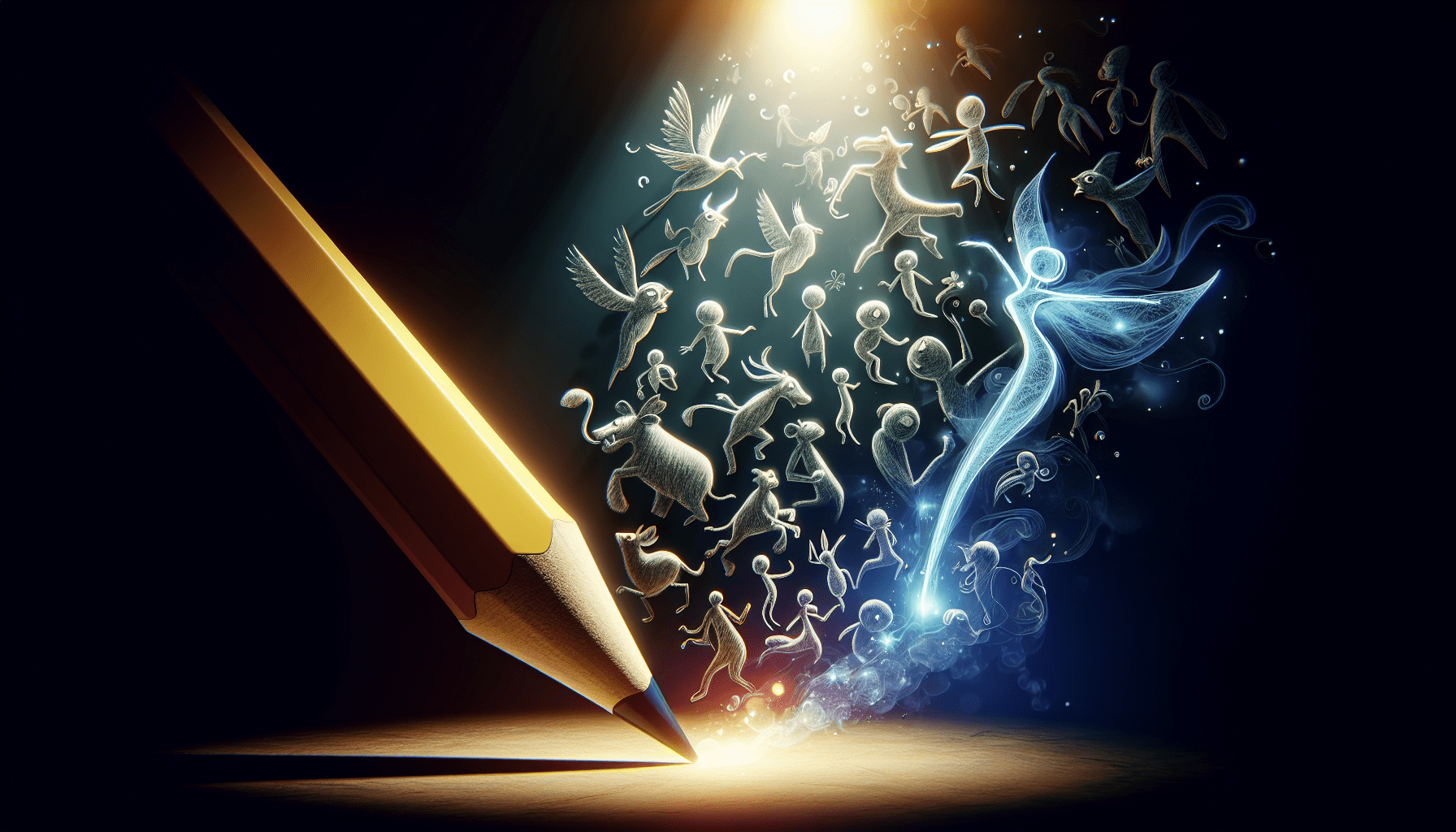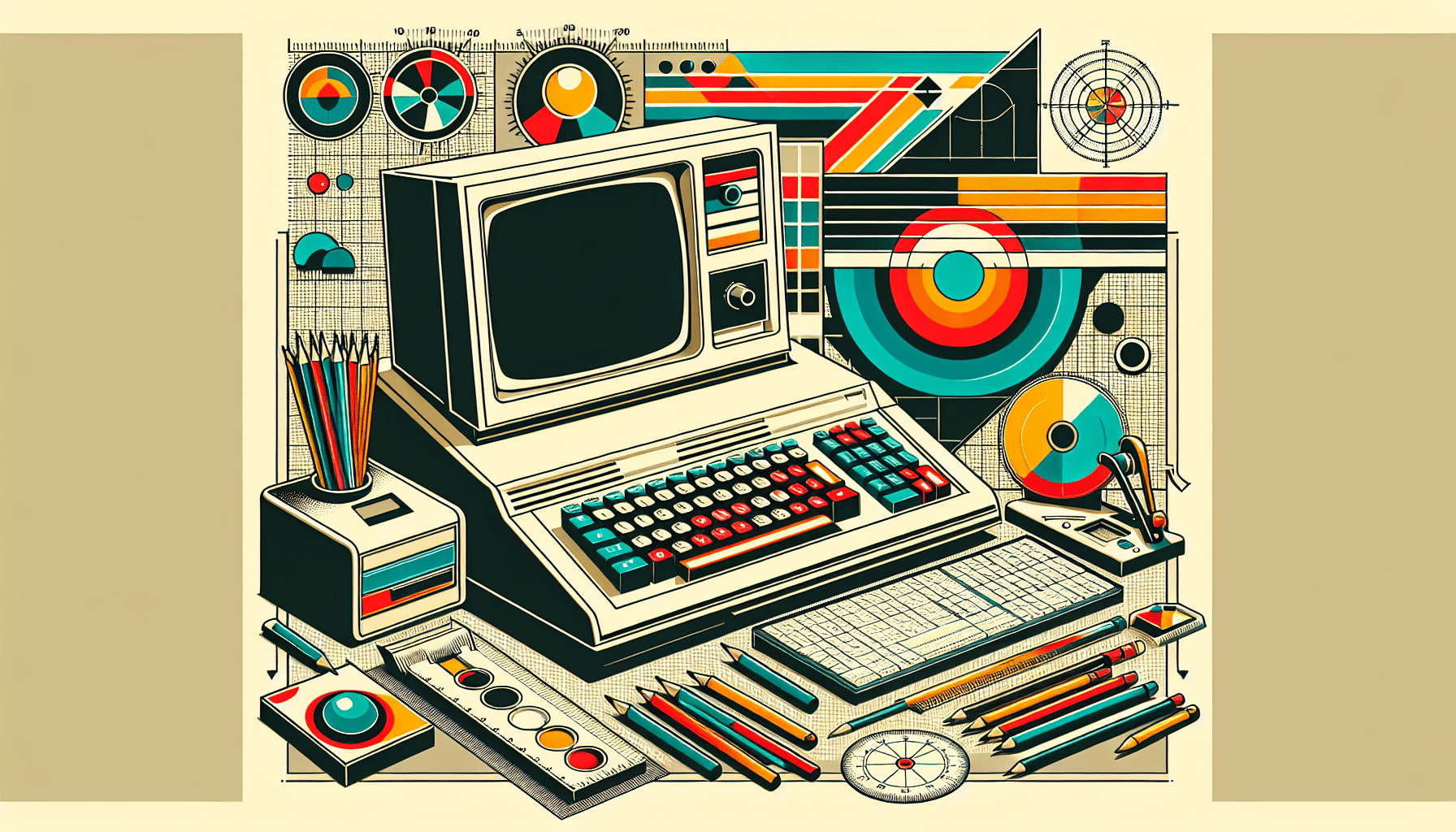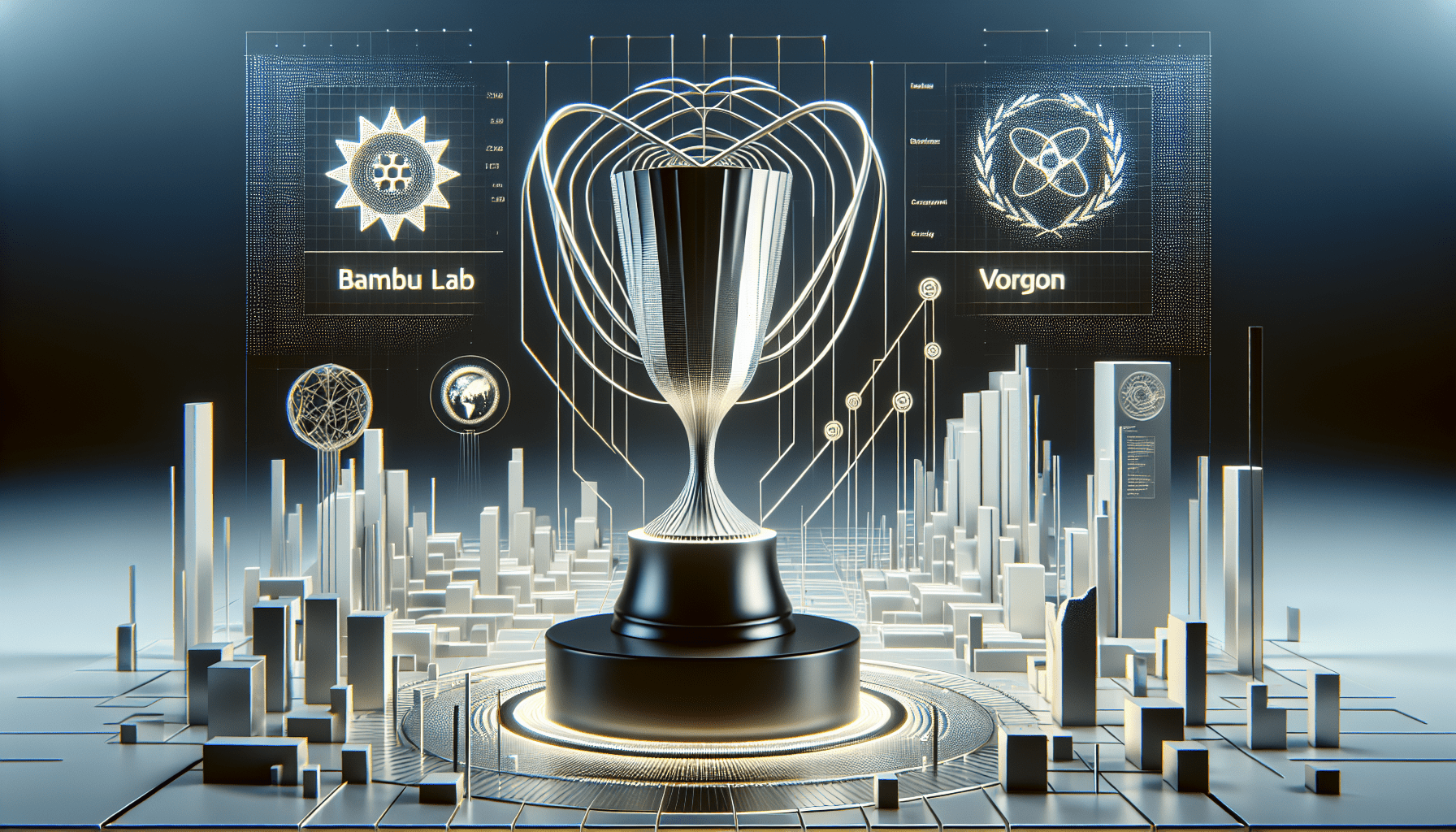FLASHFORGE AD5M 3D Printer Fully Auto Calibration Print with 1-Click Max 600mm/s Speed, All-Metal CoreXY Structure Precise Printing, Easy-Maintenance Quick-Swap Nozzle, Print Size 220x220x220mm
$259.00 (as of June 19, 2025 23:45 GMT +00:00 - More infoProduct prices and availability are accurate as of the date/time indicated and are subject to change. Any price and availability information displayed on [relevant Amazon Site(s), as applicable] at the time of purchase will apply to the purchase of this product.)In our article “12 Principles of Animation: Bringing Disney Cartoons to Life,” we explore the timeless methods that Disney artists have employed to enliven their animations. These principles, established by the Walt Disney Company, have served as the foundation for countless masterpieces that continue to captivate audiences across generations. While these principles are often used subconsciously, they are akin to the alphabet that animators use when crafting their stories. Additionally, we delve into the origins of these principles, detailing their creation by the esteemed group of animators known as “Disney’s Nine Old Men.” Through their iconic book, “Disney Animation: The Illusion of Life,” these animators laid out the very same 12 methods of animation that we discuss here. We also share a captivating video entitled “The Illusion of Life,” which vividly demonstrates the relevance and timelessness of these principles in the world of animation.

The 12 Principles of Animation
Introduction to the principles
Animation is a powerful art form that brings characters and stories to life. It has the ability to captivate audiences and evoke emotions through the movement of images on a screen. The principles of animation are a set of guidelines that were developed by Walt Disney animators in the early days of animation and continue to serve as the foundation for creating compelling and believable animations. These principles provide a framework for animators to create realistic and engaging motion, and they have been instrumental in shaping the world of animation as we know it today.
Importance and relevance of the principles in Disney cartoons
Disney cartoons are beloved by audiences of all ages, and the principles of animation have played a critical role in the success of these beloved films. From classics like “Snow White and the Seven Dwarfs” to modern favorites like “Frozen,” Disney’s use of these principles has brought their characters to life in a way that feels authentic and relatable. By applying the principles of animation, Disney animators are able to create characters that move and behave in a way that is consistent with their personalities, adding depth and realism to their stories. These principles are essential for Disney in maintaining the magic and charm that have made their cartoons so iconic.
1. Squash and Stretch
Definition and purpose of squash and stretch
Squash and stretch is a fundamental principle of animation that involves exaggerating the shape of an object or character to convey a sense of weight and flexibility. When an object is squashed, it becomes flatter and wider, while stretching elongates the object. This principle is often used to create a sense of impact and reaction in animated scenes. By applying squash and stretch, animators can make characters and objects appear more lifelike and dynamic.
Examples of squash and stretch in Disney cartoons
One of the most iconic examples of squash and stretch in Disney cartoons is the character of Goofy. Goofy’s body is often exaggerated in size and shape, stretching and squashing as he moves and performs various actions. This adds a comedic element to his character and helps to convey his clumsiness and playful nature. Another example can be seen in the scene from “The Jungle Book” where Baloo the bear is bouncing on a tree branch. As he bounces, his body stretches and compresses, giving the viewer a sense of the energy and momentum of his movements.
$30 off $400+ Anycubic Products with code AC30OFF
2. Anticipation
Explanation of anticipation in animation
Anticipation is a principle of animation that involves preparing the audience for an action or movement before it happens. It is used to create a sense of build-up and expectation, making the action that follows more impactful. Anticipation can be conveyed through subtle changes in facial expressions, body language, or even the positioning of objects within a scene. By using anticipation, animators can guide the viewer’s attention and create a more engaging and immersive experience.
How anticipation is used in Disney cartoons
Disney animators are masters at using anticipation to enhance their storytelling. In the opening scene of “The Lion King,” the animals gather on the rock ledge in anticipation of the birth of Simba, the future king. This anticipation builds suspense and sets the stage for the dramatic reveal of the newborn cub. Another example can be seen in the scene from “Beauty and the Beast” where Belle is introduced to the enchanted objects in the castle. The anticipation leading up to this moment creates a sense of wonder and magic, drawing the viewer into Belle’s world.
3. Staging
Definition and significance of staging in animation
Staging is the art of presenting an idea, action, or emotion in a clear and understandable way. It involves the arrangement of elements within a scene to guide the viewer’s attention and convey the intended message. Effective staging ensures that the audience understands the main focus of a scene and enhances the overall storytelling. It can be achieved through the use of composition, lighting, and camera angles.
Examples of staging techniques in Disney cartoons
Disney animators employ various staging techniques to enhance the impact of their storytelling. In the iconic scene from “The Little Mermaid,” Ariel emerges from the water onto the rock, with the ocean waves crashing around her. The staging in this scene emphasizes Ariel as the central focus, highlighting her transformation and the pivotal moment in her story. Another example can be seen in “The Lion King” during the musical number “I Just Can’t Wait to be King.” The use of vibrant colors, intricate backgrounds, and carefully choreographed movements enhances the energy and excitement of the scene, engaging the viewer’s attention.

4. Straight-Ahead and Pose-to-Pose Animation
Explanation of straight-ahead and pose-to-pose animation techniques
straight-ahead animation is a technique where an animator starts at the beginning of a scene and progresses frame by frame until the desired animation is complete. This technique is often used for creating scenes with a sense of spontaneity and fluidity. Pose-to-pose animation, on the other hand, involves the creation of a series of key poses that define the major movements within a scene. The animator then fills in the in-between frames to create the illusion of smooth motion. This technique allows for more control and precision in the animation process.
How Disney animators utilize these techniques in their work
Disney animators utilize both straight-ahead and pose-to-pose animation techniques to bring their characters to life. Straight-ahead animation is often used for scenes with dynamic movements, such as action sequences or comedic moments. This technique allows the animator to capture the energy and flow of the movement in a more organic way. Pose-to-pose animation, on the other hand, is utilized for scenes that require precise timing and storytelling. By carefully planning and creating key poses, Disney animators can ensure that the emotions and narrative of the scene are effectively conveyed.
5. Follow Through and Overlapping Action
Definition and purpose of follow through and overlapping action
Follow through and overlapping action are principles of animation that involve creating movements that continue after the main action has stopped or started. Follow through refers to the additional motion that occurs as a result of the main movement, while overlapping action refers to the sequential movement of different parts of an object or character. These principles are used to create a more natural and realistic sense of motion, as objects and characters do not come to an immediate stop or start in real life.
Examples of follow through and overlapping action in Disney cartoons
Disney animators are known for their attention to detail, and the use of follow through and overlapping action is no exception. In the film “Moana,” the character Maui has long, flowing hair that continues to move even after he has stopped moving. This follow through adds to the sense of weight and presence of the character. Additionally, in the film “Zootopia,” the animators incorporate overlapping action in the movements of the animal characters. Their bodies move in a fluid manner, with different parts of their bodies moving at slightly different times, creating a more natural and realistic sense of motion.
6. Slow In and Slow Out
Explanation of slow in and slow out principles
Slow in and slow out, also known as easing in and easing out, are principles of animation that involve gradually increasing or decreasing the speed of an action to create a more natural and realistic sense of motion. When an object or character starts moving, there is a gradual increase in speed, and when it comes to a stop, there is a gradual decrease in speed. This principle is used to simulate the effects of inertia and adds to the overall believability of the animation.
How Disney animators create realistic motion using slow in and slow out
Disney animators are skilled at using slow in and slow out to create realistic and believable motion in their animations. In the film “Frozen,” there is a scene where Elsa is running through the snow. As she starts running, her movements are slow and deliberate, gradually building up speed. When she comes to a stop, her movements gradually slow down, creating a smooth and gradual transition. This attention to detail in the timing and spacing of the animation allows for a more seamless and immersive viewing experience.
7. Arcs
Definition and significance of arcs in animation
Arcs are a fundamental principle of animation that involve the movement of an object or character along a curved path. This principle is based on the observation that most natural movements follow an arc rather than a straight line. By animating movements along arcs, animators are able to create a more natural and visually appealing sense of motion.
Examples of the use of arcs in Disney cartoons
Disney animators utilize arcs in their animations to create realistic and visually pleasing movements. In the film “Aladdin,” the character of Jasmine has a scene where she swings across a balcony using a rope. Her movements follow a smooth arc, enhancing the gracefulness and elegance of her actions. Another example can be seen in the film “The Little Mermaid,” where Ariel’s swimming motions are animated along arcs, mimicking the fluidity and movement of a fish in water. These arcs add to the fluidity and beauty of the animation, creating a more engaging visual experience for the audience.
8. Secondary Action
Explanation of secondary action and its role in animation
Secondary action is a principle of animation that involves adding additional movements or actions to enhance the main action or convey additional information. These secondary actions can be used to support the main action, add depth to the scene, or provide insight into the character’s emotions or intentions. When used effectively, secondary actions can greatly enhance the storytelling and make the animation more engaging and believable.
How secondary action adds depth and realism to Disney cartoons
Disney animators understand the importance of secondary action in creating depth and realism in their animations. In the film “The Princess and the Frog,” the character of Tiana is cooking in the kitchen. As she moves around, her skirt and apron sway with her movements, adding secondary actions that enhance the sense of her presence and the environment. Another example can be seen in the film “Finding Nemo,” where the character of Marlin expresses his emotions through secondary actions such as shaking and twitching. These actions provide additional insight into the character’s state of mind, deepening the viewer’s connection to the story.
12. Appeal
Explanation of appeal in animation
Appeal is a principle of animation that refers to the ability of a character or design to captivate and engage the viewer. It encompasses both the visual and the emotional aspects of a character, as well as their movement and behavior. An appealing character is one that is well-designed, relatable, and has a unique personality. By creating appealing characters, animators are able to establish a connection with the audience and make the animation more memorable and enjoyable.
How Disney animators create appealing characters through design and movement
Disney animators are renowned for their ability to create appealing characters that resonate with audiences. Through careful character design, they create visually appealing and memorable characters that capture the imagination. Additionally, they use the principles of animation to bring these characters to life, giving them distinct movements and behaviors that enhance their appeal. Whether it’s the elegant movements of a Disney princess or the comedic antics of a sidekick character, Disney animators understand the importance of appeal in creating characters that are loved and cherished by audiences.
In conclusion, the 12 principles of animation are the building blocks that have allowed Disney animators to create some of the most beloved and iconic cartoons of all time. From squash and stretch to appeal, these principles provide a roadmap for animators to create animations that are not only visually stunning but also engage and captivate audiences. By understanding and applying these principles, animators can breathe life into their creations and create animations that will stand the test of time.
Buy Photon Mono M5 Get Free 1KG Resin








